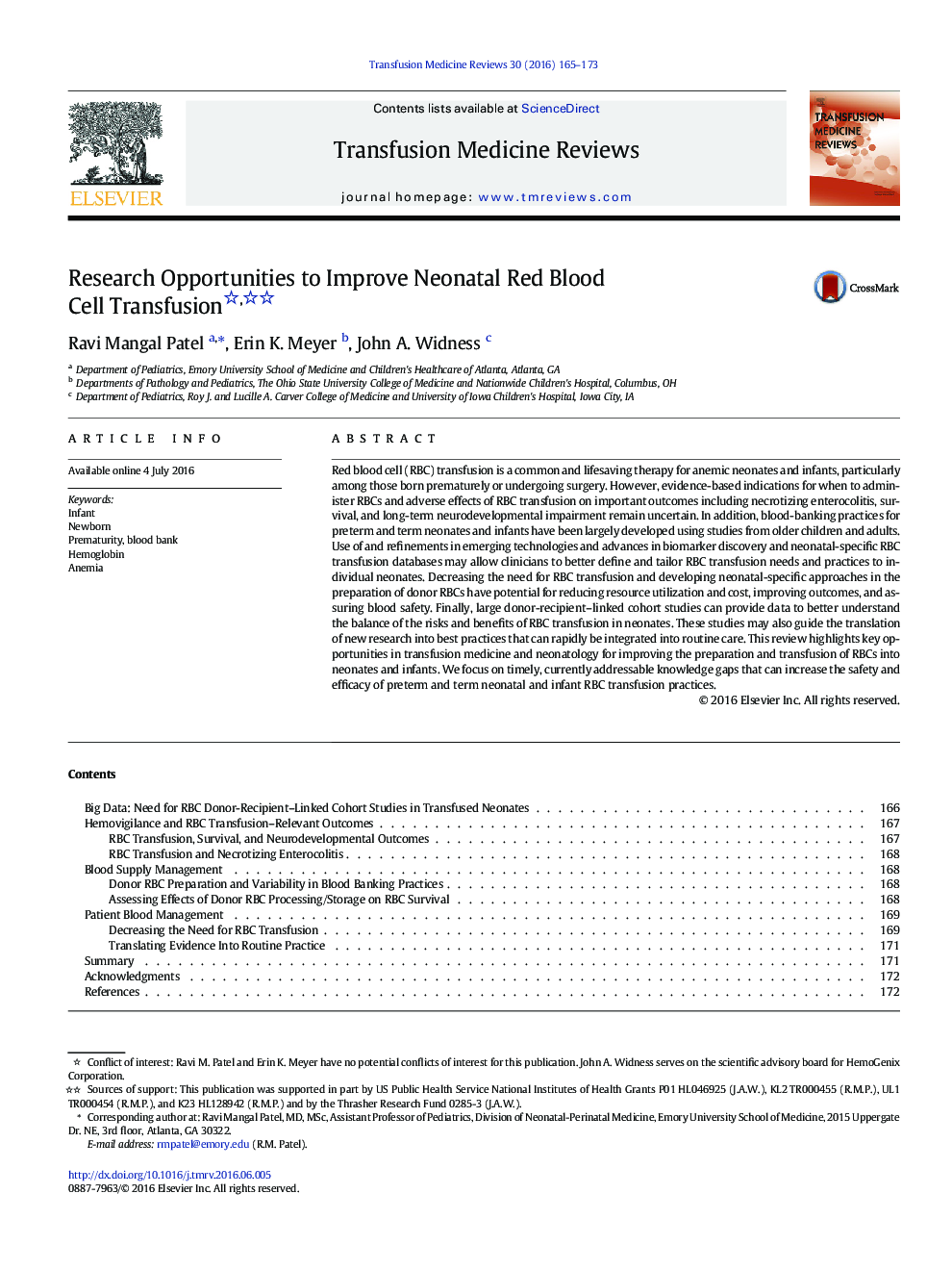| Article ID | Journal | Published Year | Pages | File Type |
|---|---|---|---|---|
| 3336439 | Transfusion Medicine Reviews | 2016 | 9 Pages |
•Effects of RBC transfusion on important neonatal and infant outcomes are uncertain.•New technologies, biomarkers, and neonate-specific databases may guide individualized RBC transfusion.•Donor-recipient cohort studies are necessary to evaluate best-practices.•Studies of neonatal and infant-specific blood banking practices are needed.•Rapid translation of best-practices into widespread care requires new innovation.
Red blood cell (RBC) transfusion is a common and lifesaving therapy for anemic neonates and infants, particularly among those born prematurely or undergoing surgery. However, evidence-based indications for when to administer RBCs and adverse effects of RBC transfusion on important outcomes including necrotizing enterocolitis, survival, and long-term neurodevelopmental impairment remain uncertain. In addition, blood-banking practices for preterm and term neonates and infants have been largely developed using studies from older children and adults. Use of and refinements in emerging technologies and advances in biomarker discovery and neonatal-specific RBC transfusion databases may allow clinicians to better define and tailor RBC transfusion needs and practices to individual neonates. Decreasing the need for RBC transfusion and developing neonatal-specific approaches in the preparation of donor RBCs have potential for reducing resource utilization and cost, improving outcomes, and assuring blood safety. Finally, large donor-recipient–linked cohort studies can provide data to better understand the balance of the risks and benefits of RBC transfusion in neonates. These studies may also guide the translation of new research into best practices that can rapidly be integrated into routine care. This review highlights key opportunities in transfusion medicine and neonatology for improving the preparation and transfusion of RBCs into neonates and infants. We focus on timely, currently addressable knowledge gaps that can increase the safety and efficacy of preterm and term neonatal and infant RBC transfusion practices.
